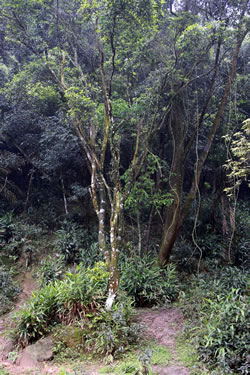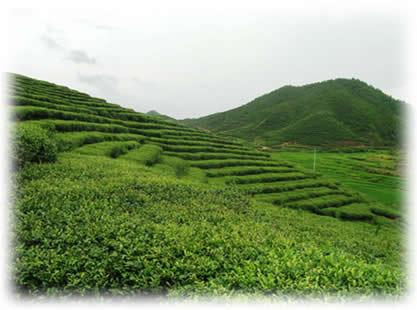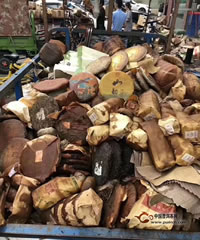Sky prices of Chinese teas
Teas that are more expensive than gold
 There are some exclusive ‘breeds’ of Chinese teas that are currently fetching prices more than gold, a phenomenon that struck many.
There are some exclusive ‘breeds’ of Chinese teas that are currently fetching prices more than gold, a phenomenon that struck many.
Some examples are:
- The Wu Yi Oolong Da Hong Pao from the original Da Hong Pao tea tree of Jiu-Long-Ke (九龙窠), is priced for 5,200,000 Yuan/500g, that is 10,400 Yuan/g - equivalent to the value of 10 residential apartments in the Wu Yi area, or 34 times of the gold price.
- The Mao Cha harvested from the Pu-erh king tree of Lao-Ban-Zhang was sold for 240,000 Yuan/500g in 2108.
- The most famous Rou Gui (a premium Wu Yi rock tea) from the Niu-Lan-Keng (牛栏坑) is being sold for 30,000 Yuan/500g on the current market.
- 1,280,000 Yuan/500g Longjing (Dragon Well green tea) in 2018.
- 745,000 Yuan/500g Xin-Yang Mao Jian green tea in 2019.
Note: 1USD=6.7 Chinese Yuan
The above products are not only selling, but hard to get in some cases. The list of sky prices Chinse teas is also growing.
To understand this phenomenon, we need to take a few steps back and start from some fundamentals.
Tea is more than a beverage in China
In China, tea is a beverage, a culture, an obsession and inspiration to many historical and modern artists. Many Chinese ancient poems feature teas and tea consumption as spiritual elements, romantised if not centred in their works.
At the same time, the art of producing the finest teas has been an obsession by the tea farmers, right down to the finest details. High quality teas = demands = profits. The highly developed skills are guarded as intellectual properties and passed down only to the male descendants of the families and kept secret.
The determinants of the quality of a tea
There are tow crucial determinants of the quality of a tea: the quality of the tea leaves and the skills to process them.
There are numerous factors that influence the quality of the tea leaves. The area of production, the species (or particular plant/plants) of the tea bushes/trees and the harvesting time are among the most important ones.
Contributing factors of the sky prices
The affordability that came with the fast expansion of wealth in China is an obviously one.
The one to pay attention here is also a unique obsession about the ‘exclusiveness’ of products that is almost unique to the Chinese. If a product is exclusive (paired with the quality), sky is the limit for its price.
For the sky price teas: they are often marketed as:
- Tea leaves from xxx tea trees, such as Pu-erh; or xxx area such as Rou Gui; or both such as Da Hong Pao
- Hand made by xxx tea master
The real statement behind is: there is not another one like it on the current market.
Then it comes the practice of ‘faking’ the exclusive
Tea industry is a market that is relatively difficult to regulate, as it is difficult to standardise the tea quality especially at the top end. Tea consumers are the judge, and many are often not experienced enough to differentiate the subtle differences.
With the astonishing profit margins, a ‘faking’ practice is unfortunately in the brew. Examples are:
- Tea vendors use ‘blended’ teas to mimic various aspects of certain top end teas. Close but surely not the same and asking for the same or slightly lower prices.
- False adverting. For example, some vendors would pay to erect the company signages at the exclusive tea fields (eg Niu-Lan-Keng 牛栏坑 for Rou Gui) for purely advertising purpose, such as showing to visitors or in the company advertising materials. Many never use a leaf from these fields in their products.
- The claims made ‘hand made by xxx’, the truth is that he/she barely looked at the process.
There is an insider information from the Wu-Yi Oolong indsutary that 98% of the Niu-Lan-Keng (牛栏坑) Rou Gui is not from Niu-Lan-Keng.
The obvious victims of these practices: tea farmers and consumers.


 A big advantage of
A big advantage of 
